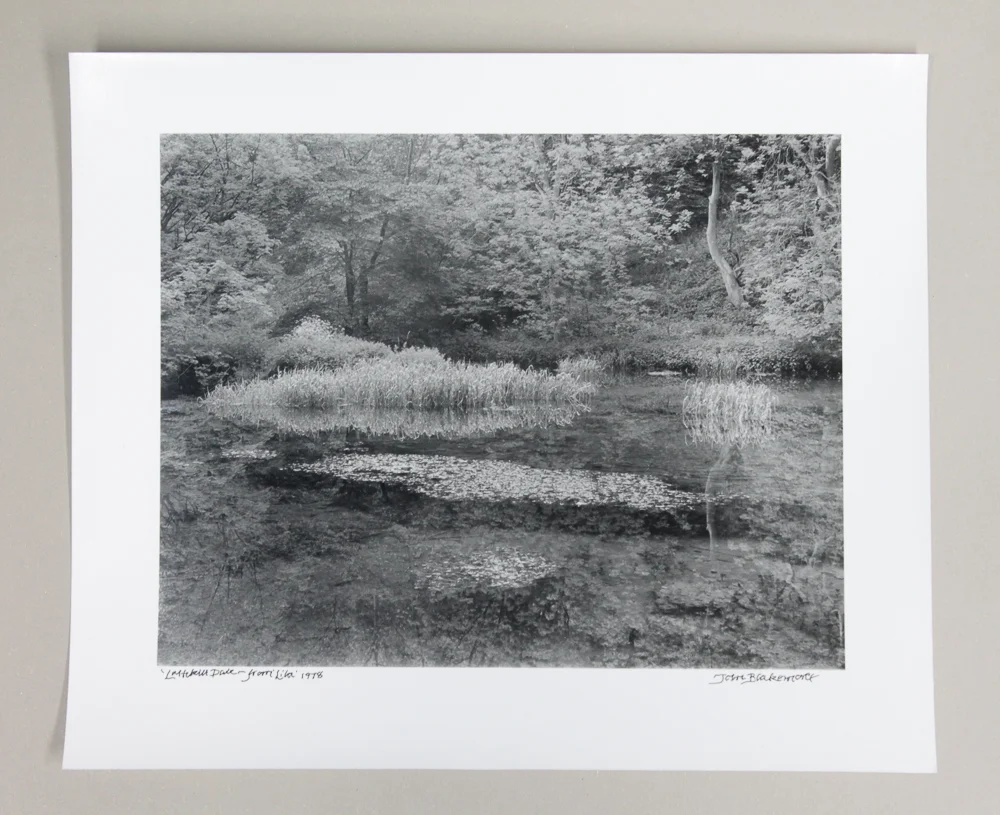Today I thought I would share some thoughts with you on a print by John Blakemore entitled 'Lathkill Dale - from Lila’, 1978.
The image measures 17 x 22 cm and has been printed on a 23 x 27 cm (nearly 9 x 11 inches) sheet of fibre based paper. The image is not small, neither is it large; it has ‘stocky’ proportions which creates a sense of presence, perhaps making it look larger than it really is.
At first sight, the print presents as an even swatch of light, mid-grey. A sense of shimmering silver is there too. As the viewer moves closer the print shifts and changes, revealing a more complex tonality and a charming sense of depth and detail. Scanning up and down and from left to right, the viewer realises that there is in fact a quite staggering range of tone, from very near black to sparkling specular highlights. Mini-dramas unfold here and there, separate dioramas vying for the eye’s company.
The central trope of the image is a body of flood water. In his book Black and White Photography Workshop, Blakemore writes of the problems he had with the negative, which suffered from flare at the edges. Due to the temporary nature of the flood, Blakemore couldn’t return to make more exposures, and so had to make do with what he had.
The water is at once reflective and transparent. It is the reflecting reeds and leaves that gives the print its sparkle, reaching up the tonal scale. Yet imprinted on this, in almost ghost-like fashion, is a series of darker reflections. The viewer’s focus shifts back and forth between surface and reflection as the two aspects compete. Neither wins out, and in their interplay lies a wondrous tonal dance. The prints feels alive, shifting, sparkling, drawing one in.
Moving outwards again, a sense of settled, overall grey returns. The dominant tonal evenness reinforces the frame and prevents the eye from falling away. There is a serenity, a peacefulness; a state which belies the miniature dramas within. This is a print I could look at for a long time, and through framing, no doubt will.
I was able to acquire this print through John’s ‘Bargain Box’ which is available on his website here. It is a collection of test and alternative prints that John is kindly offering for sale at a much lower price than his regular work.
